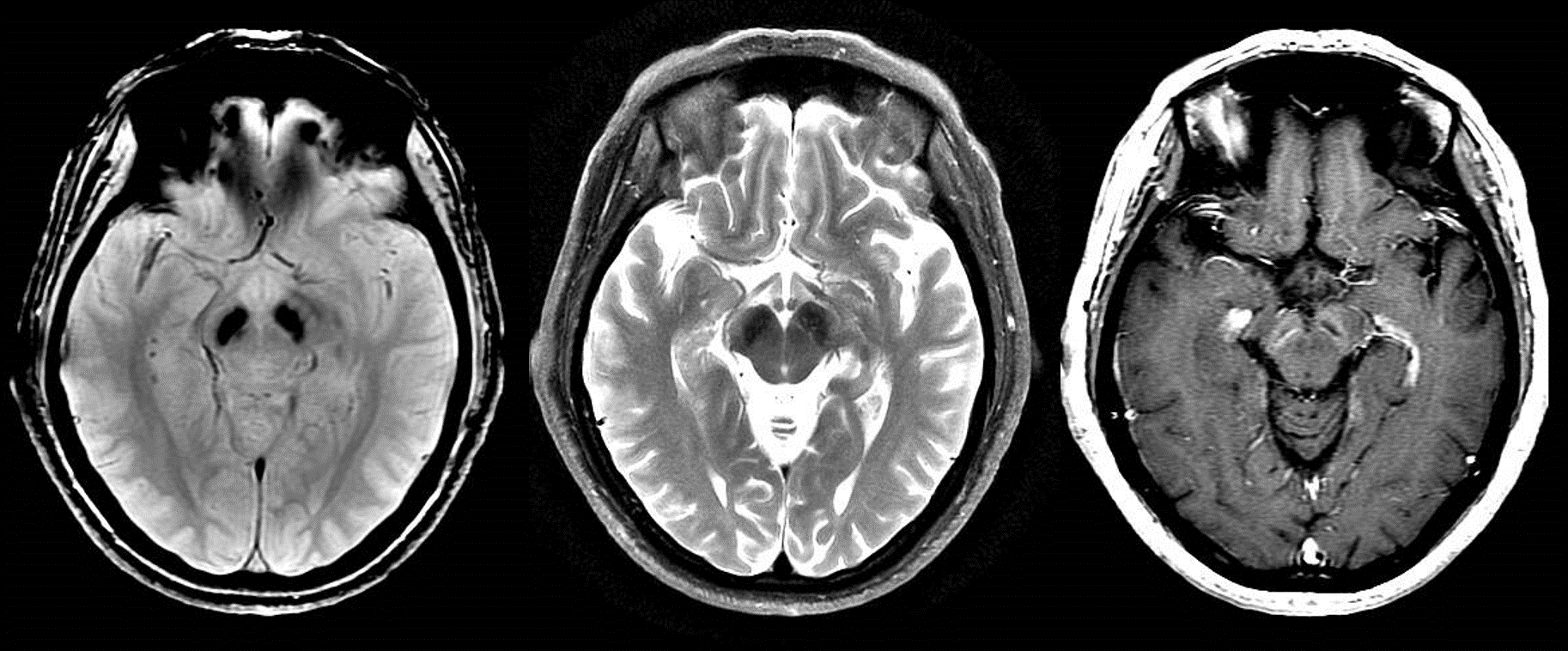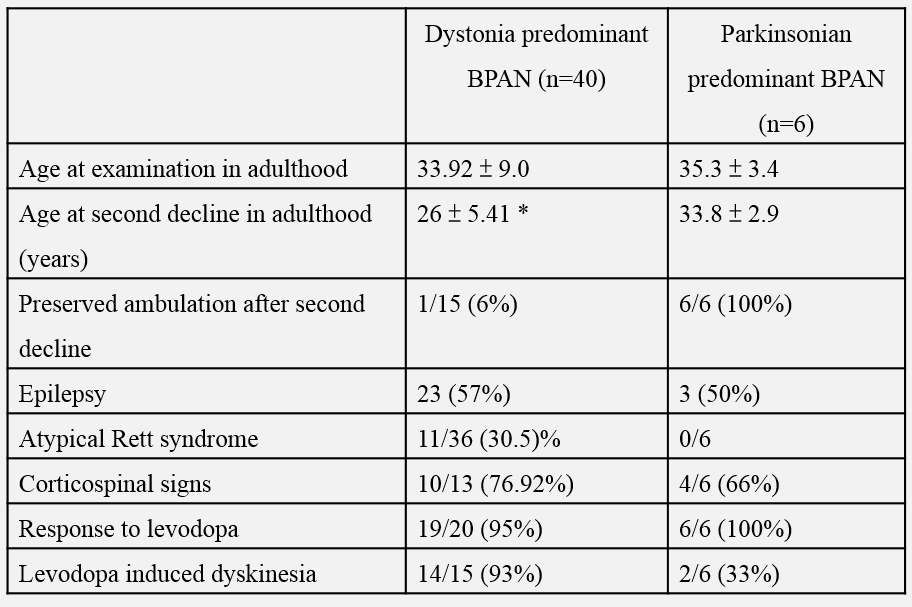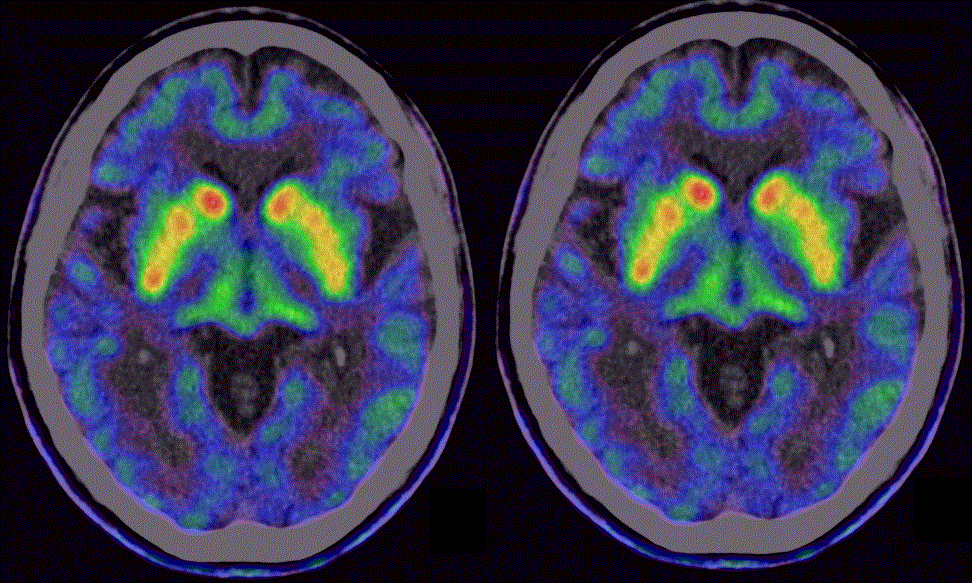Session Information
Date: Tuesday, June 6, 2017
Session Title: Genetics (Non-PD)
Session Time: 1:45pm-3:15pm
Location: Exhibit Hall C
Objective: Describe three BPAN patients with two different phenotypes and explore the phenomenology of patients reported in the literature.
Background: De novo mutations in WD repeat domain 45 (WDR45) are causative of beta-propeller protein-associated neurodegeneration (BPAN). The phenotype is characterised by early developmental delay followed by a secondary period of cognitive and motor decline in adulthood with predominant generalised dystonia-parkinsonism. A T1-hyperintensity halo with hypointense centre in the substantia nigra is universal. A prominent parkinsonism in the second deterioration stage has been reported in only in a subset of patients.
Methods: Pubmed, Embase, Google Scholar search articles published from 2013 to October 2016 using terms beta-propeller protein-associated neurodegeneration, WDR45 and static encephalopathy of childhood with neurodegeneration in adulthood as limits. We categorised patients in prominent parkinsonian phenotype when this was specified as symmetrical or asymmetrical parkinsonism with or without dystonia. Patients that not described with these features were categorised as predominant dystonia with parkinsonism.
Results: We included literature (n=43) and three of our patients with BPAN and movement disorders (Figure 1 and 2). Age at BPAN diagnosis was 33.95 ± 8.5 years (range; 15-52) and 93.47% were female patients (Table 1). The collated patients had a combination of predominant dystonia with parkinsonism (n=40) or predominant parkinsonism (n=6) . The group with predominant parkinsonism had characteristically bradykinesia, gait impairment, rigidity and altered postural reflexes. Of the reviewed literature, two patients had asymmetry but only one had rest tremor. In the parkinsonian group, only two (current study patients) were combined with focal dystonia. In contrast patients with prominent dystonia, 33 had combined parkinsonism and 7 only had dystonia alone. A trial of levodopa was performed in 20 patients, 19 of which were reported to have improvement of symptoms. In the six patients with predominant parkinsonism, the mean levodopa equivalent daily dose was 433.3 ± 312.51 mg. Levodopa-induced dyskinesias were reported in 93% with predominant dystonia vs 33% in the parkinsonian group.
Conclusions: Predominant parkinsonism with moderate to excellent levodopa response, older age at second decline and preserved ambulation suggest a distinctive BPAN phenotype
References: 1.- Hayflick SJ, Kruer MC, Gregory A, et al. β-Propeller protein-associated neurodegeneration: a new X-linked dominant disorder with brain iron accumulation. Brain 2013;136:1708-1717.
2.- Nishioka K, Oyama G, Yoshino H, et al. High frequency of beta-propeller protein-associated neurodegeneration (BPAN) among patients with intellectual disability and young-onset parkinsonism. Neurobiol Aging 2015;36:9-15.
To cite this abstract in AMA style:
H. Morales, B. Sanchez-Hernandez, R. Leal-Ortega, M. Rodriguez-Violante, M. Kurian, V. Fung. The predominant parkinsonian phenotype in beta propeller associated neurodegeneration (BPAN) [abstract]. Mov Disord. 2017; 32 (suppl 2). https://www.mdsabstracts.org/abstract/the-predominant-parkinsonian-phenotype-in-beta-propeller-associated-neurodegeneration-bpan/. Accessed December 23, 2025.« Back to 2017 International Congress
MDS Abstracts - https://www.mdsabstracts.org/abstract/the-predominant-parkinsonian-phenotype-in-beta-propeller-associated-neurodegeneration-bpan/



